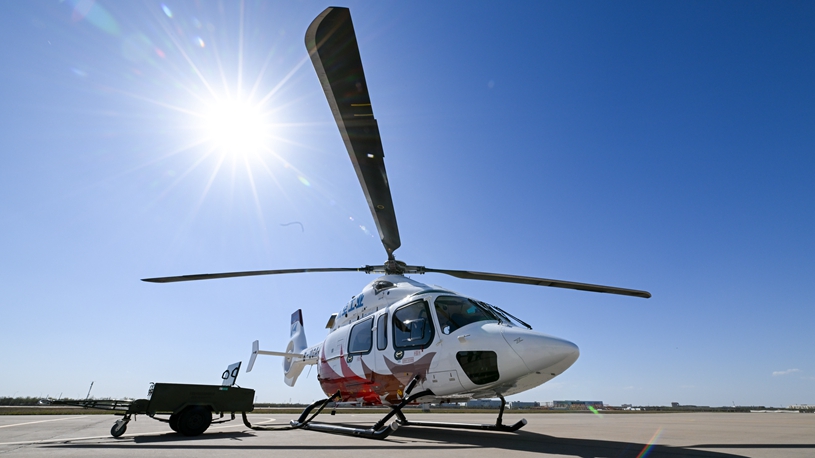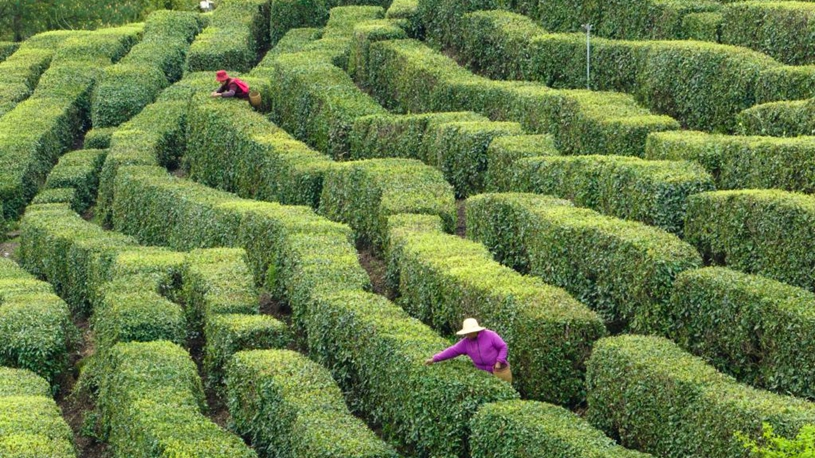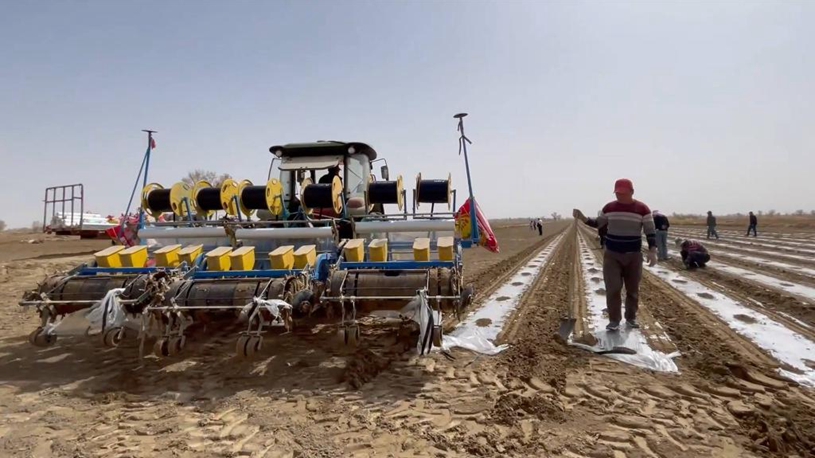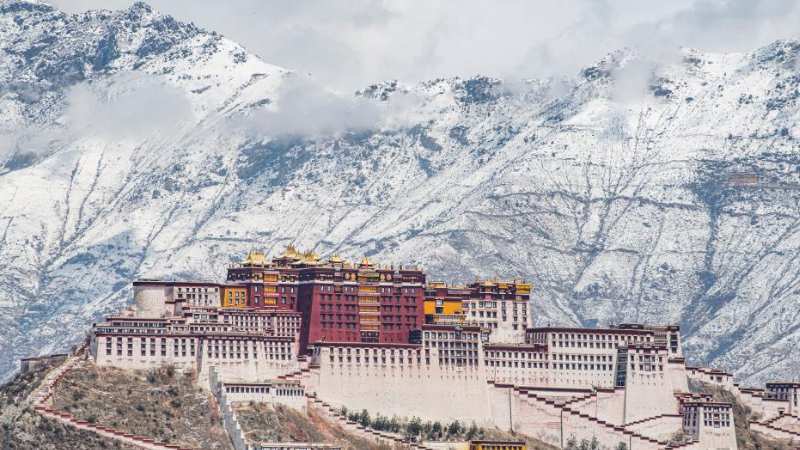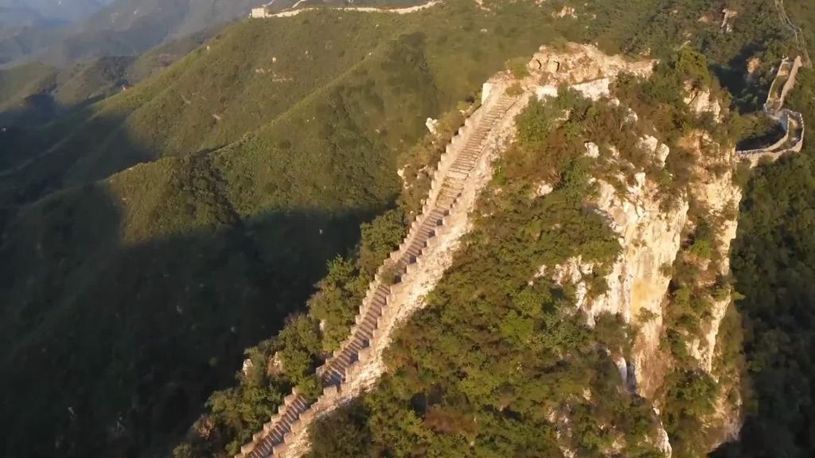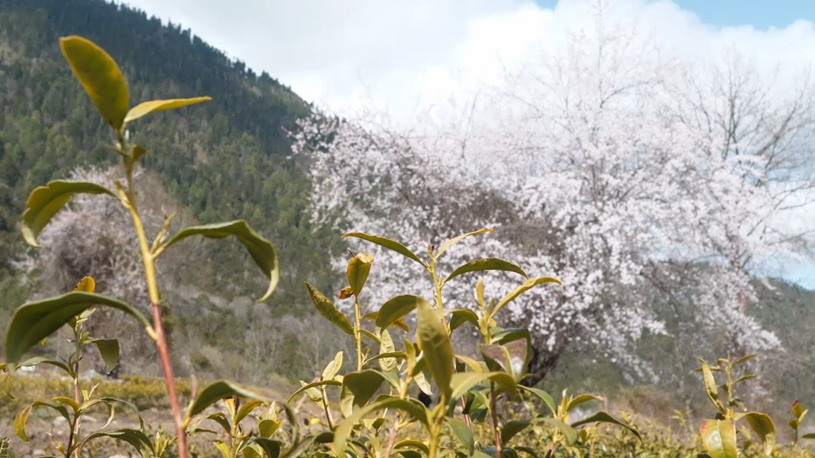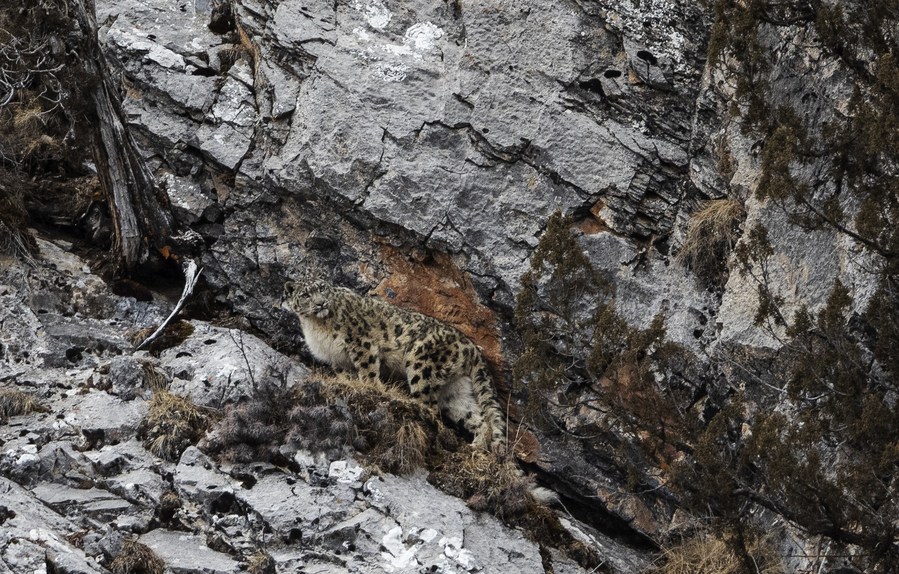
A snow leopard is pictured in a canyon in Zadoi County of Yushu Tibetan Autonomous Prefecture, northwest China's Qinghai Province, Feb. 21, 2023. (Xinhua/Fei Maohua)
XINING, April 9 (Xinhua) -- When he heard the snow leopards roaring, high on the Qinghai-Tibet Plateau, Kunchok Choephel took a few deep breaths to contain his excitement and crept carefully up the slope, camera in hand.
Keen to avoid alarming the animals, he lay on the snowy ground and raised his head to observe their activity. From 8:30 a.m. to 11 a.m., he held his telephoto lens with one hand while pressing the shutter with the other, capturing the courtship and mating process of the two big cats on video.
Although five years have passed since the experience in northwest China's Qinghai Province, the scene is still clear in his mind.
"At that time, after staying still for hours, the arm under the camera went to sleep and felt like a stone," he recalled. "But I was so excited that I couldn't wait to tell everyone. I quickly went downhill, found a place with a signal and sent the videos to my friends. After hearing their exclamations, I didn't feel bitter or tired anymore."
Kunchok Choephel, 35, is a herder in the Namse Township of Qinghai's Yushu Tibetan Autonomous Prefecture. His family has earned its living from herding for generations.
Namse, located in the source region of the Lancang River, is a part of the Sanjiangyuan National Park. The Sanjiangyuan area is known as Asia's "water tower" as it contains the headwaters of the Yangtze, Yellow and Lancang rivers. Namse is also known as the "hometown of snow leopards" due to the frequent sightings of the big cat species.
Known as the "king of snow mountains," the snow leopard is under China's highest national-level protection and is listed as vulnerable by the International Union for Conservation of Nature.
When Kunchok Choephel was a child, on a summer day in 2001, his parents said that a sheep at home had been killed by a snow leopard. It was the first time he had heard the animal's name.
"I just thought it was scary," he said.
However, from that day onwards, his bond with the animals was formed.
When he herded cattle and sheep on the pastures, he often saw photographers arriving in Namse to take photos, and their cameras piqued his interest.
"For the first time, I saw the scenery and animals in my hometown through a lens, and it was very beautiful," he said.
Since then, he often thought about getting a digital camera of his own. In 2014, he spent 15,000 yuan (about 2,180 U.S. dollars) on a camera, almost half of his annual income.
"Back then, I didn't even know about aperture, shutter or sensitivity. I just loved taking pictures. I would go out to take pictures with my camera every day and wouldn't go home until the camera had run out of power," he said.
Thereafter, he began his odyssey with snow leopards, an animal that poses difficulties for photographers, due to its elusive nature, coupled with its protective markings that blend in with the mountainous scenery.
In 2014, Kunchok Choephel photographed a snow leopard for the first time. However, due to the long distance, the relatively short focal length of his lens and his imperfect skills, the leopard in the photos was unclear.
He began studying photography techniques in more depth, learning from the experienced nature photographers and becoming familiar with the habits of snow leopards. He also bought a long telephoto lens to help him capture images at greater distances.
"The snow leopards mainly prey on blue sheep. If the body of a blue sheep is found, then a snow leopard is usually nearby. It will stay around until it has finished eating the sheep and then it leaves for the next place," he said.
With the improvement in his filming techniques, Kunchok Choephel captured a variety of animals on camera, including lynxes, white-lipped deers and snow leopards. In February 2018, he photographed another rare leopard species. It was the first time anyone had captured such images in the Sanjiangyuan area.
China started piloting the Sanjiangyuan National Park in 2016, and it received its official designation in 2021. Also in 2021, Kunchok Choephel was offered a job opportunity as a ranger, with his responsibilities including patrolling the source region of the Lancang River and protecting wild animals and plants. In return, he was given an annual income of over 21,000 yuan.
With the continuous strengthening of ecological protection efforts, the ecological environment in the Lancang River's source region continues to improve. There are now 85 snow leopards recorded in the Namse grand canyon, an increase from 42 in 2017.
When he returns home from a day of photography, he often tells his two daughters stories about filming wild animals. Although the children are small, they have shown a special love for snow leopards, calling them "cats" and holding snow leopard dolls when they sleep at night.
Even though Kunchok Choephel has taken many photos of snow leopards, he is still not quite satisfied with this output. "I still have a lot of ideas for photographing the species, and my most satisfying photo will always be the next one," he said. ■

